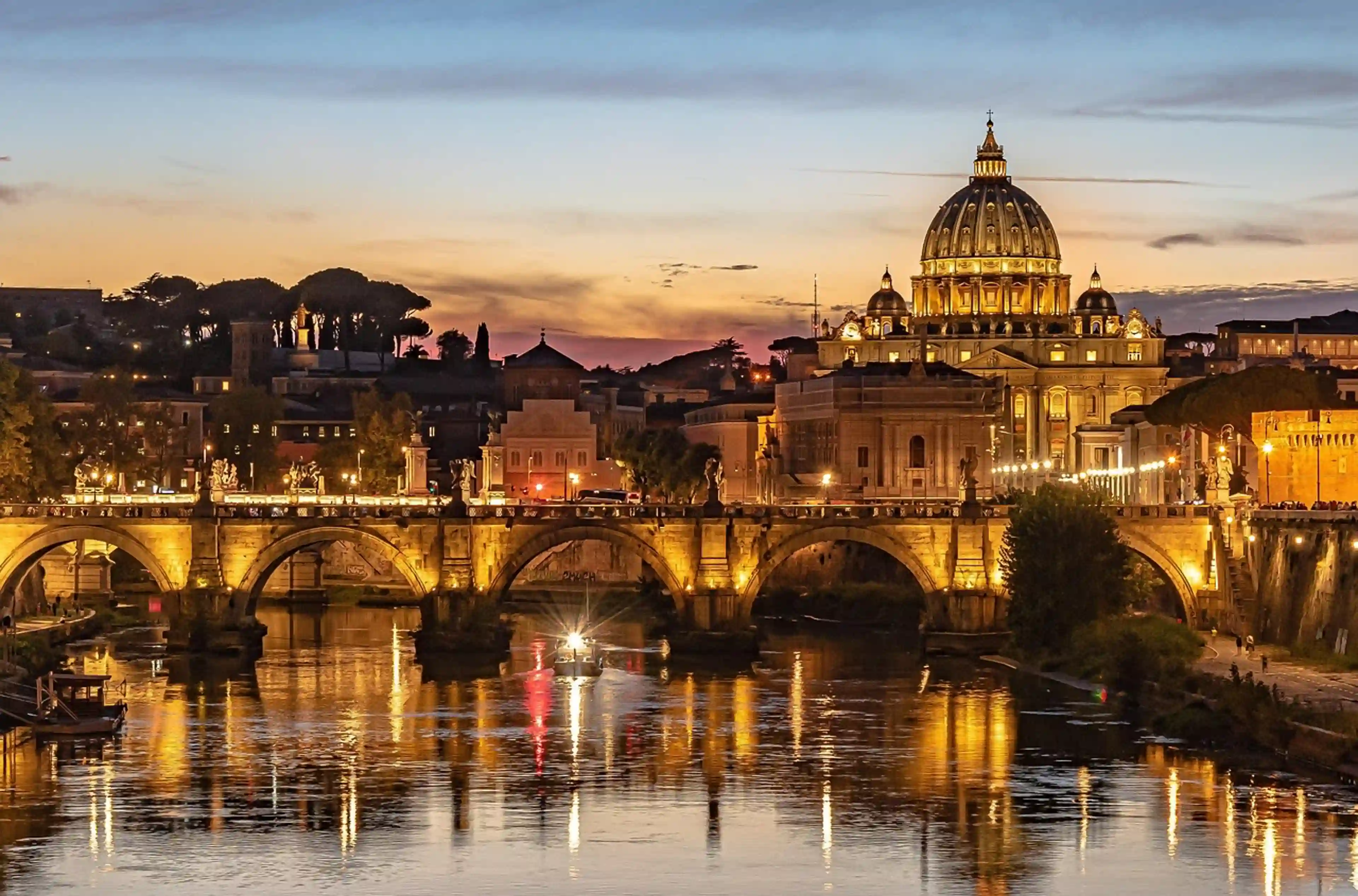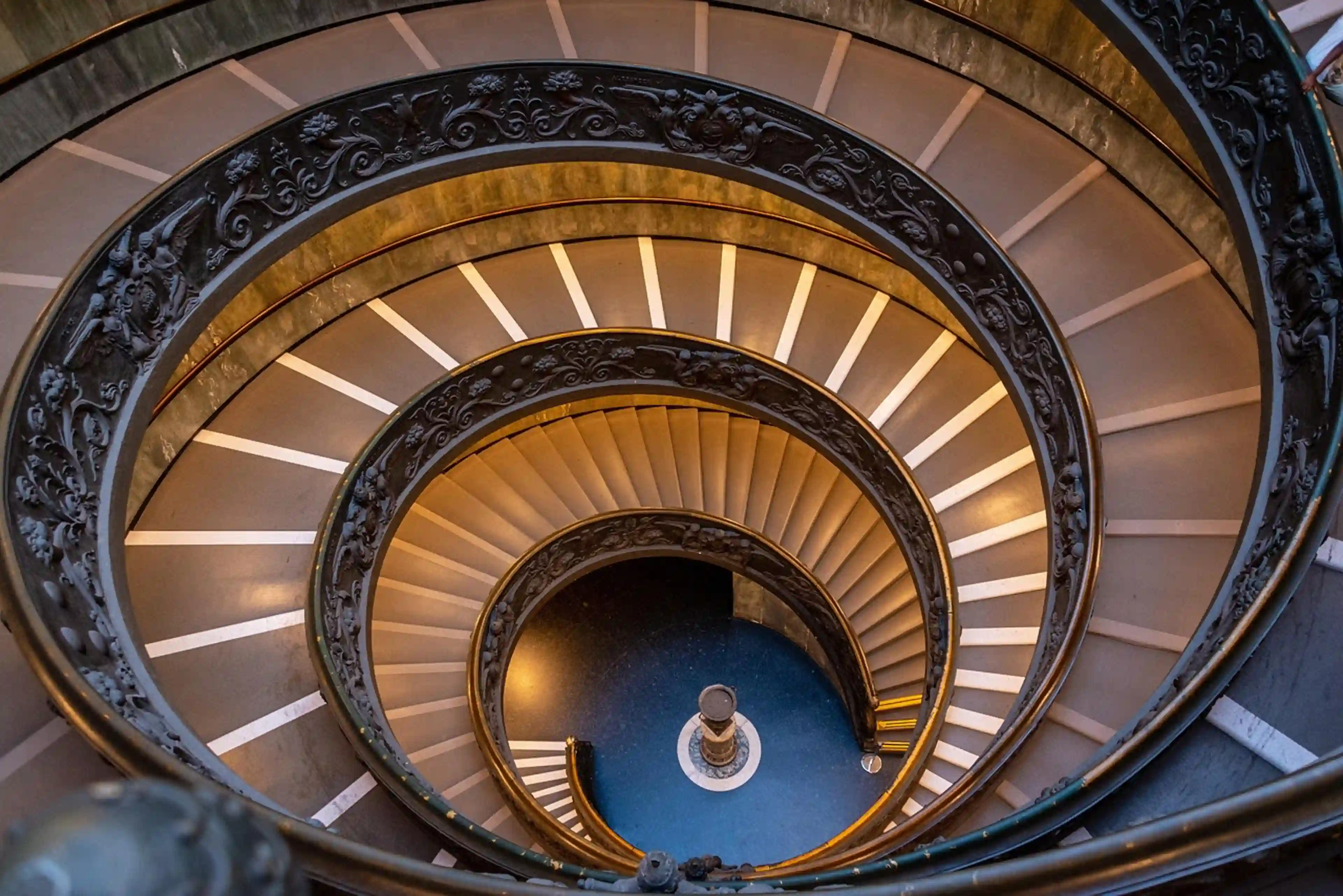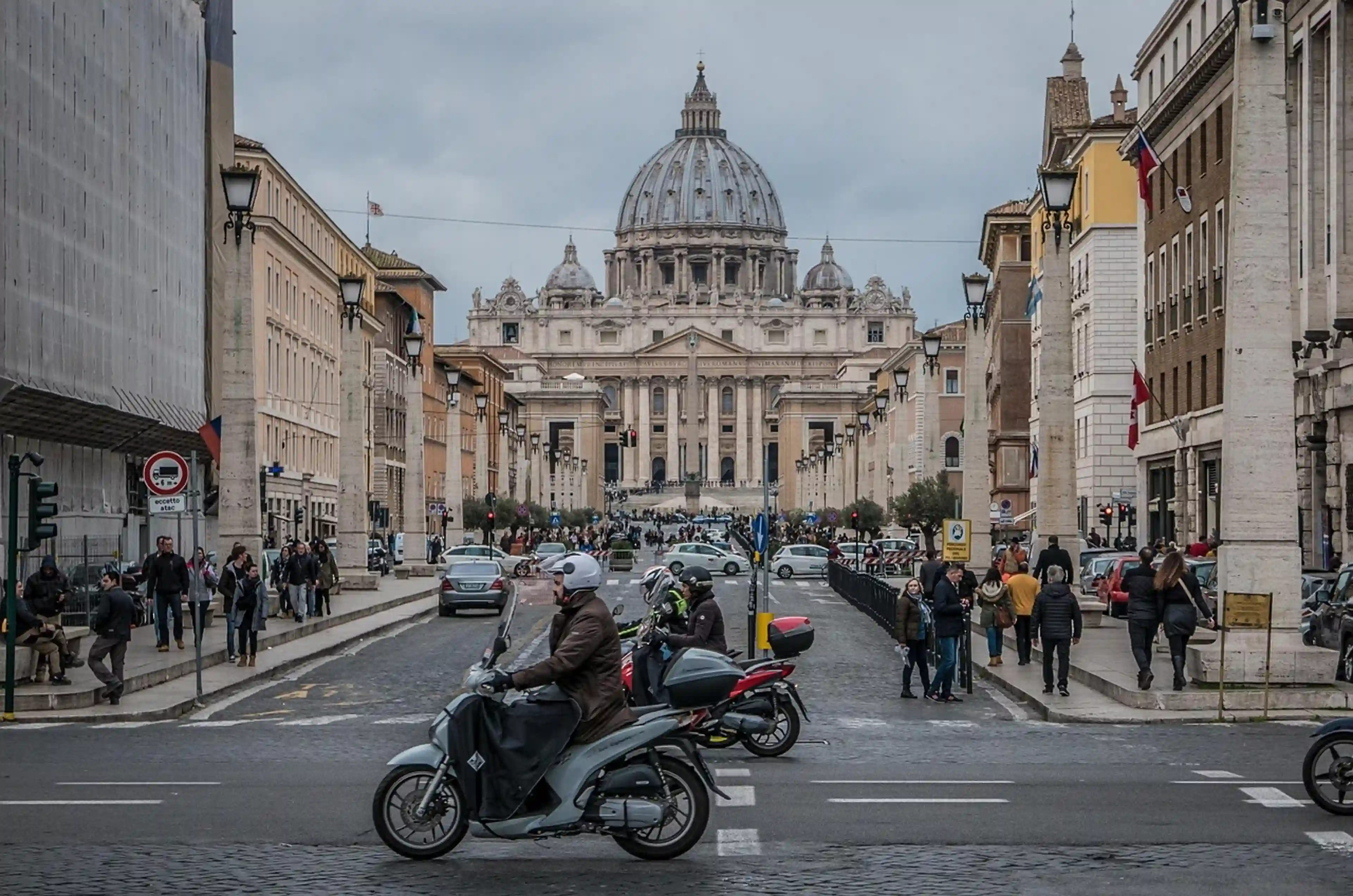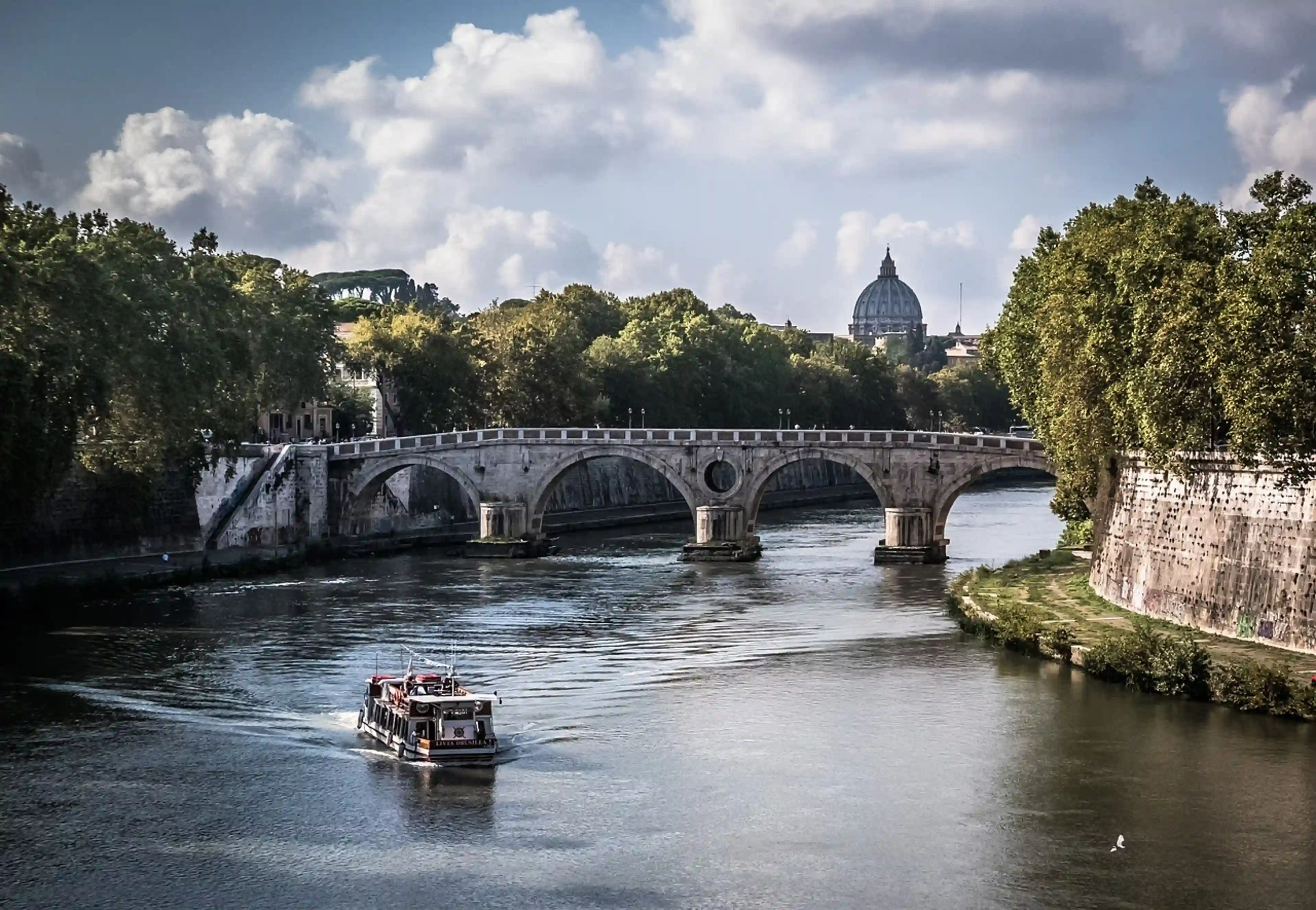Rome
General presentation
Top 50
History, culture & traditions
Travel advice
Wikipedia
Viator activities
Tiqets activities
Overall presentation
Rome, the capital of Italy, fully deserves its nickname of "Eternal City." This iconic metropolis offers a journey through the millennia where ancient history harmoniously coexists with contemporary life. Its exceptional heritage includes must-see monuments like the majestic Colosseum, the historically rich Roman Forum, the impressive St. Peter's Basilica, and the Sistine Chapel with its legendary frescoes. Beyond its architectural treasures, Rome is a gastronomic paradise where authentic Italian cuisine and the coffee culture are expressed in all their splendor.
Geographical situation
Nestled in the heart of the Lazio region, in the central-west of Italy, Rome gracefully stretches along the banks of the Tiber. Its strategic position, just 25 km from the Tyrrhenian Sea, has given it a major cultural and commercial crossroads role in Europe over the centuries. This central location has greatly contributed to its historical importance and international influence.
Atmosphere and character
The Roman atmosphere is characterized by a unique marriage of historical grandeur and contemporary vitality. Each neighborhood possesses its own personality: Trastevere charms with its cobbled streets, traditional trattorias, and bohemian ambiance, while the historic center impresses with the density of its ancient monuments. The city vibrates to the rhythm of an intense cultural life, offering numerous museums, art galleries, and events throughout the year. Romans cultivate the Italian art of living, between coffee breaks in lively squares and evening strolls during the traditional "passeggiata."
Climate
Rome enjoys a typical Mediterranean climate, characterized by marked seasonal contrasts. Summers are hot and dry, with average temperatures reaching 31.7°C in August. Winters remain relatively mild and humid, with an average of 12.6°C in January. Rainfall is concentrated mainly during the autumn and winter, while summer offers generous and prolonged sunshine.
Best season to visit
Spring (April to June) and autumn (September to October) are the ideal times to discover Rome. These intermediate seasons offer mild temperatures and moderate tourist crowds, allowing for optimal exploration of the city. Summer, although festive, can be exhausting with temperatures frequently exceeding 35°C and a high concentration of visitors. Winter offers the advantage of a more intimate atmosphere and more favorable accommodation rates, despite some rainy days.
Access
The city is served by two international airports:
- Leonardo da Vinci Airport Rome Fiumicino (FCO) : main air hub located about 30 km from the city center
- Rome Ciampino Airport (CIA) : secondary terminal about 15 km from the center, favored by low-cost airlines
From Fiumicino, the Leonardo Express train offers a quick and direct connection to Rome-Termini central station in 31 minutes. Bus and taxi services complement the transportation options between the airports and the city center.
Internal transport
The Roman public transport network offers several complementary options:
- Metro : three lines (A, B, and C) effectively serving the main tourist areas
- Buses and trams : a dense network covering the entire urban territory
- Self-service bikes and scooters : ideal solutions for short trips
- Taxis : numerous but relatively expensive
To explore the historic center, it is recommended to prioritize walking and public transport due to traffic restrictions and parking difficulties. This approach also allows you to fully immerse yourself in the unique charm of the eternal city.
Top 50
Wikipedia
Viator activities
Tiqets activities



